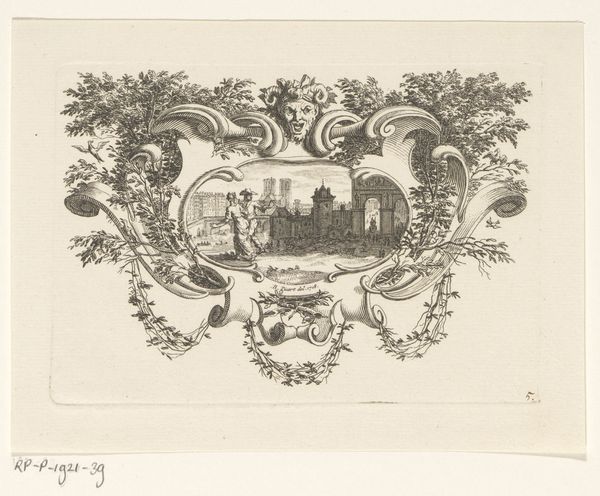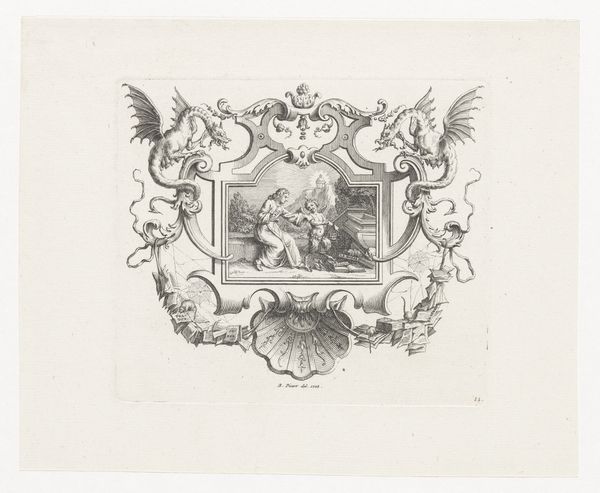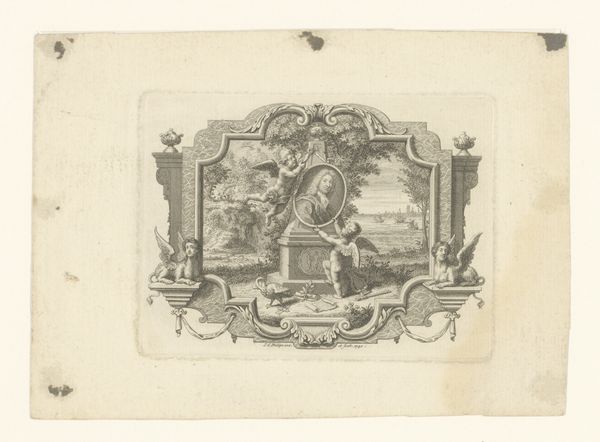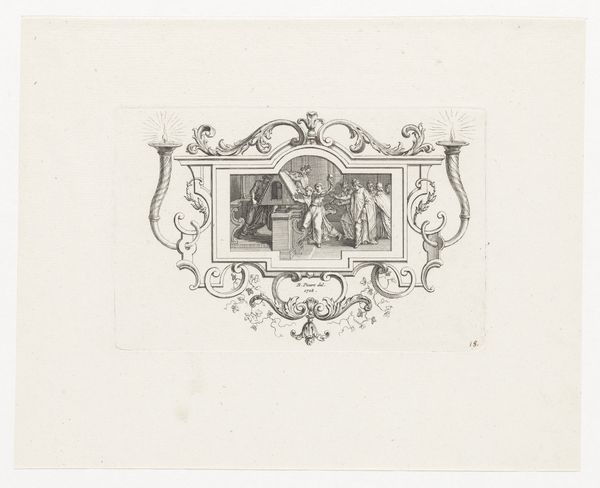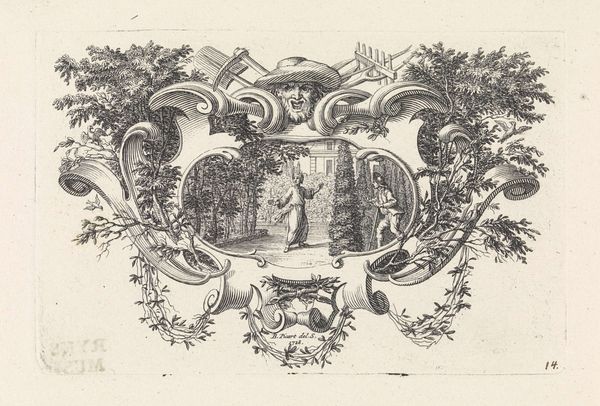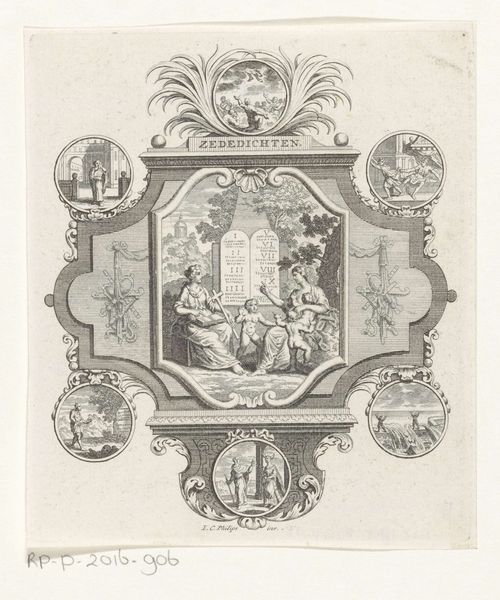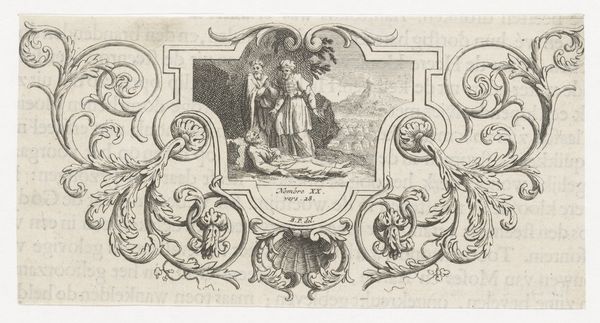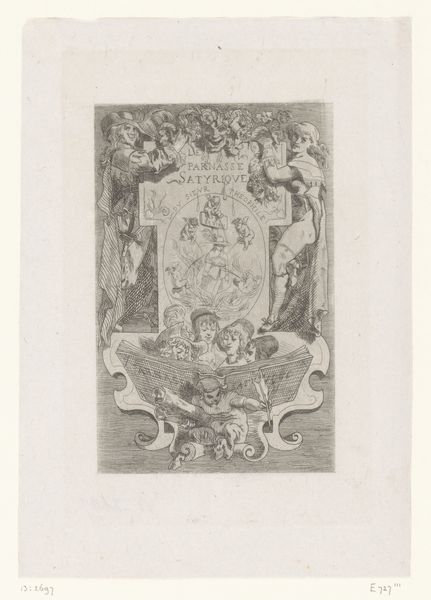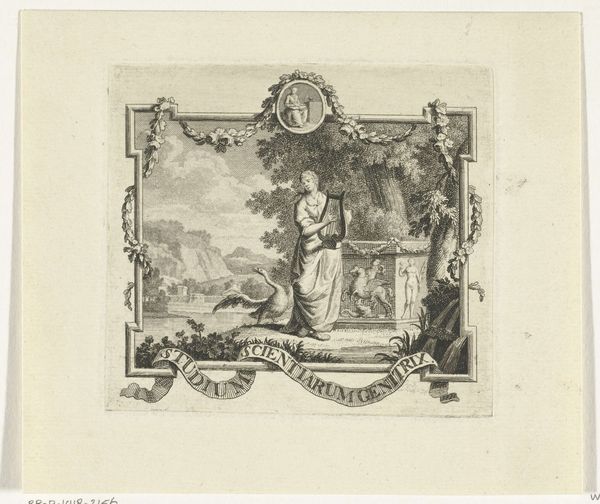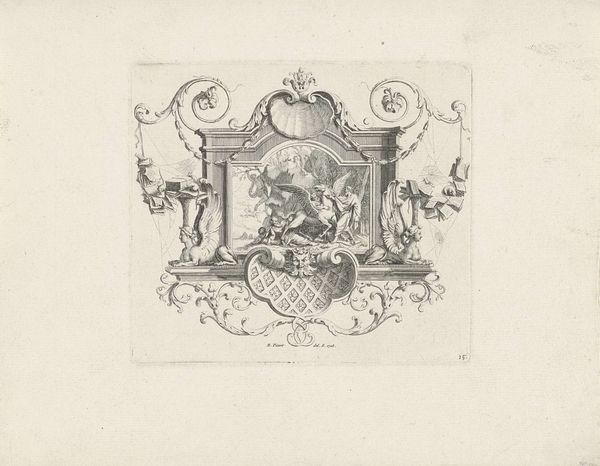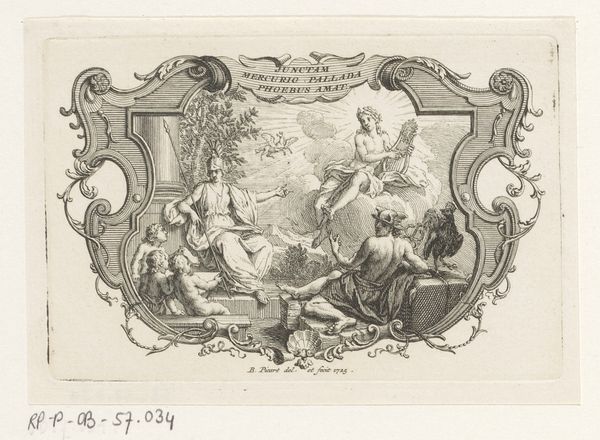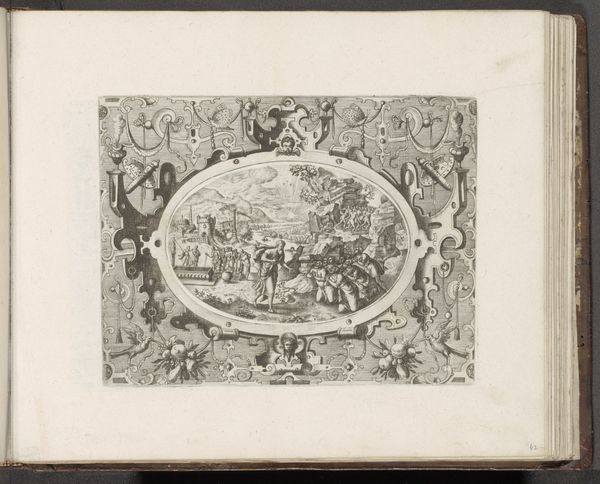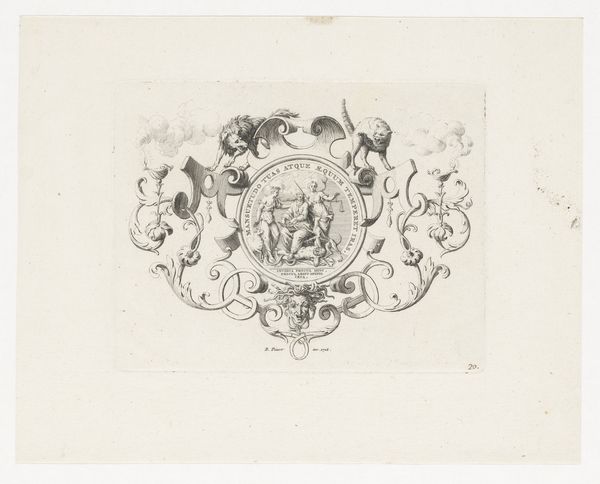
print, etching
#
neoclacissism
#
statue
#
narrative-art
# print
#
etching
#
old engraving style
#
landscape
#
etching
#
figuration
#
history-painting
Dimensions: height 75 mm, width 78 mm
Copyright: Rijks Museum: Open Domain
Curator: This etching by Daniel Nikolaus Chodowiecki, created around 1790, is entitled "Ridder vertelt kinderen over het vrijheidsverbond," or "Knight Tells Children About the Covenant of Freedom." It's currently held at the Rijksmuseum. Editor: There's a very interesting light quality to this print; almost an airy ethereal quality despite the subject matter of a knight addressing children. The framing device feels decidedly classical, almost like looking into a stage set. Curator: Absolutely. Let's consider Chodowiecki's likely process here. Etchings involve meticulous work—coating a plate with wax, scoring the design, and then using acid to bite into the metal. Each print is thus an impression of the labor embedded in its production. This work coincides with growing enlightenment ideals related to education. Editor: Precisely! The narrative scene within that structured border draws your eye to the arrangement of figures and the obelisk as an anchoring object in the image's composition. The knight gestures toward it as if explaining an abstract idea that's now grounded in materiality. It signifies something tangible—a commitment—reflected also in the knight's regalia. Curator: Right. What fascinates me is considering this print's purpose. Was it a single artistic statement, or mass-produced and widely available as printed ephemera to promote discussions on social reforms? How did its accessibility affect societal perceptions and the consumption of narratives around freedom? Editor: And how does the semiotics of dress play into that idea of freedom? The knight's gear reads clearly as a set of symbols denoting nobility and protection—juxtaposed with these bare-legged children whose very vulnerability enhances that noble purpose being telegraphed here. It establishes power dynamics through purely visual markers. Curator: Furthermore, we must look at this historical moment. How the print would be consumed considering Europe at the cusp of a new sociopolitical era—examining the influence of Enlightenment ideas—and in this piece a knight acts as its pedagogue. Editor: It’s an interesting detail to remember while examining how forms relate back and forth between art, the state and political power more broadly! Curator: Agreed. This piece reminds us how physical creation mirrors ideological creation. Editor: And how even an etched line embodies grand narratives.
Comments
No comments
Be the first to comment and join the conversation on the ultimate creative platform.
